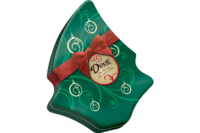Despite uncertainty with the COVID-19 pandemic, the National Retail Federation (NRF) predicts consumers will open their pocketbooks to spread holiday cheer.
Based on a survey conducted in October in partnership with Prosper Insights & Analytics, the NRF forecasts holiday spending will increase between 3.6 and 5.2 percent over 2019 to reach between $755.3 billion and $766.7 billion.
“We know this holiday season will be unlike any other, and retailers have planned ahead by investing billions of dollars to ensure the health and safety of their employees and customers,” NRF President and CEO Matthew Shay said. “Consumers have shown they are excited about the holidays and are willing to spend on gifts that lift the spirits of family and friends after such a challenging year. We expect a strong finish to the holiday season, and will continue to work with municipal and state officials to keep retailers open and the economy moving forward at this critical time.”
The NRF also projected online and other non-store sales, which are included in the overall total, to increase between 20 and 30 percent, representing between $202.5 billion and $218.4 billion in sales. That’s up from $168.7 billion in 2019.
The federation noted consumers would increasingly turn to online shopping for their holiday purchases, just as they had at the start of the pandemic. In fact, eCommerce sales were up 36.7 percent year-over-year during the third quarter, the NRF said.
Nearly all retailers surveyed (96 percent) expected their holiday online sales to increase, while 60 percent of consumers said they’d do holiday shopping online, up from 55 percent in 2019. Another 45 percent expected to visit a department store, down from 53 percent in 2019. As for discount stores, 43 percent said they’d shop there, down from 51 percent last year.
Just under a quarter (23 percent) said they’d shop at local or small business, representing no change from 2019.
On average, consumers were expected to spend just under $998 on holiday purchases, with $650 going to family, friends and coworkers; $230 going toward non-gift items such as food and decorations; and $117 on other holiday purchases for themselves or others.
The NRF reported 19 percent of consumers said they typically travel for the holidays but had decided to stay home at the time of the survey. More than half (53 percent) of those who changed their holiday plans said they’d spend more on holiday items as a result.
“Consumers have experienced a difficult year but will likely spend more than anyone would have expected just a few months ago,” said NRF Chief Economist Jack Kleinhenz. “After all they’ve been through, we think there’s going to be a psychological factor that they owe it to themselves and their families to have a better-than-normal holiday. There are risks to the economy if the virus continues to spread, but as long as consumers remain confident and upbeat, they will spend for the holiday season.”









